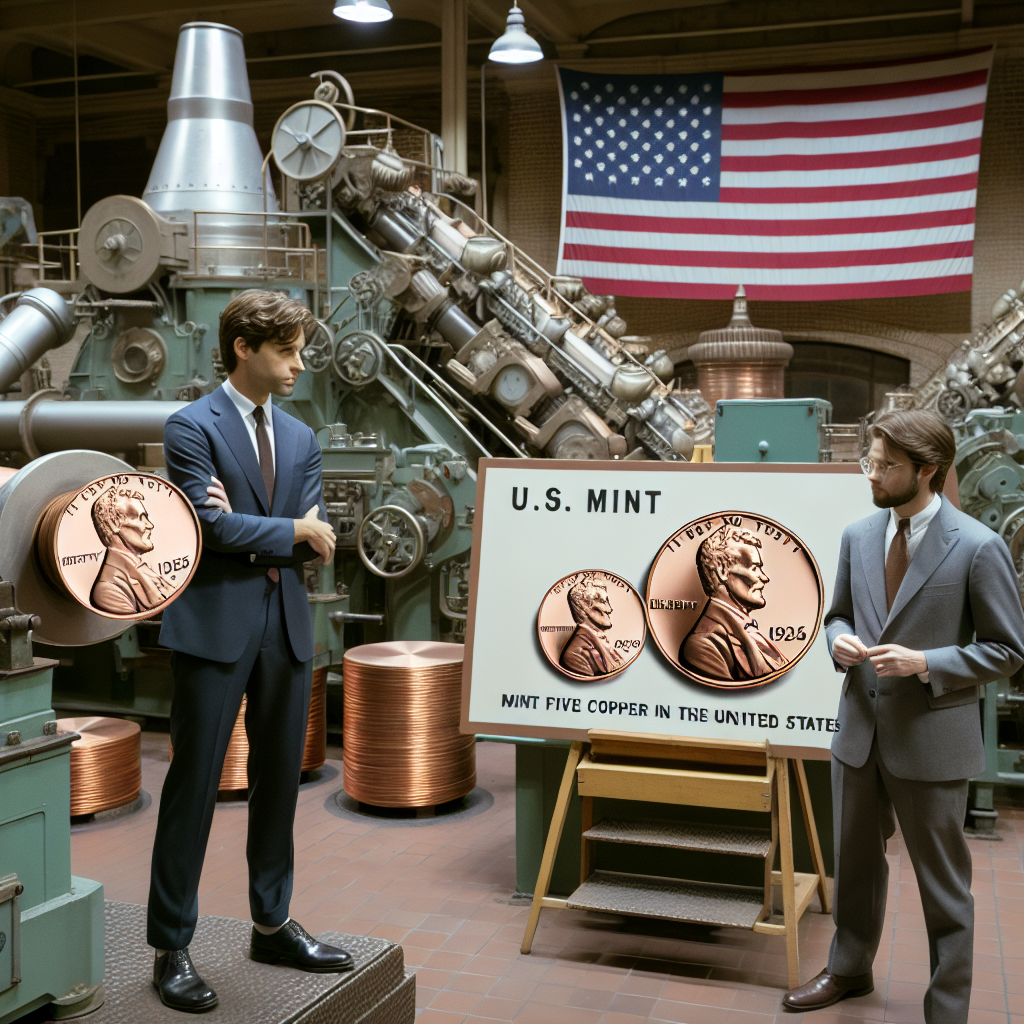On November 13, 2025, the U.S. Treasurer, Brandon Beach, visited the Philadelphia Mint on Wednesday to mint the final five one-cent coins, commonly known as pennies, marking the end of a 232-year history of producing one-cent coins in the United States.
The Secretary of the Treasury, Scott Bessent, had originally planned to attend the event but had to cancel his appearance due to a delayed schedule.
In February, President Trump had ordered the Treasury to stop the “wasteful” minting of coins, leading to adjustments in pricing at gas stations, fast-food chains, and supermarkets where cash transactions would be rounded up or down.
The Treasury cited rising production costs, shifting consumer habits, and evolving technologies as reasons why producing one-cent coins was no longer economically feasible nor necessary.
It was mentioned that the cost to produce a one-cent coin had risen to 3.69 cents, compared to 1.42 cents a decade ago.
Officials from the U.S. Mint stated that production of circulating one-cent coins had been halted months prior, except for a certain quantity minted for an upcoming auction in December, which were marked with an omega symbol as a distinction.
The Director of the Philadelphia Mint, Robert Kurzna, explained that the five one-cent coins minted on Wednesday were part of the final batch intended for the auction, emphasizing that these coins could theoretically still be circulated, unlike the shinier and differently crafted collectible versions.
Details regarding the auction are expected to be announced soon, according to officials.
Acting Director of the Mint, Kristie McNally, mentioned that the first and last coins to be auctioned were estimated to be sold for around $100,000 each. She stated that all proceeds would go towards the Mint’s operations, with any surplus funds being handed over to the U.S. Treasury.
The Treasury projected an annual savings of about $56 million for the U.S. Mint by temporarily suspending the production of one-cent coins. Despite this, they affirmed that one-cent coins would still be legal tender, with a projected circulation exceeding 300 billion coins, “far exceeding commercial needs.”
Gabriel Mathy, a professor at the American University, expressed sadness over the disappearance of the one-cent coin, attributing it to inevitable cost increases. He added that while the iconic U.S. coin would endure for some time, people might begin hoarding one-cent coins.
The United States, along with countries such as Canada, Australia, Ireland, and New Zealand, is gradually phasing out its lowest denomination coins, rounding cash transactions to the nearest five cents, while electronic payments remain precise.
The one-cent coin was first issued by the government in 1793. Since 1909, the coin, made of zinc and copper, has featured the likeness of President Abraham Lincoln on the obverse side.
In the 2024 fiscal year, the one-cent coin accounted for 57% of the total coin production at the U.S. Mint, totaling 3.2 billion coins out of 5.61 billion. The Mint indicated that they would continue limited production of collectible versions of the one-cent coin.
An official from the Mint mentioned plans to release some gold versions of the one-cent coin.
Supporters of the one-cent coin argue that it helps lower consumer prices and provides a source of revenue for charitable organizations.
However, for many Americans, this coin had become more of a nuisance, often ending up discarded in drawers, jars, or piggy banks.
The American Bankers Association stated last month that circulation of one-cent coins had slowed down this year, leading to localized supply issues, particularly in areas where certain bank terminals were closed, resulting in surplus coins unable to be deposited.
The association encouraged consumers to check their homes, cars, and coin jars for spare change and bring them to banks, retailers, or coin exchange kiosks to help alleviate the shortage. They also noted that the decision to discontinue the one-cent coin would be made jointly by Congress and the President, as the U.S. Constitution grants Congress the authority to coin money.
Representative Frank Lucas, a Republican from Oklahoma, revealed ongoing collaboration with House Conference Chair Lisa McLain, a Democrat from Michigan, to develop bipartisan legislation addressing the high production costs of coins.
In a statement to Reuters, Lucas stated, “For the 19th consecutive year, the U.S. government has incurred losses on producing one-cent and five-cent coins. The legislation proposed by our bipartisan effort is under consideration in the House to support President Trump’s call to reduce the burden on taxpayers.”
(This article is based on reporting from Reuters)

